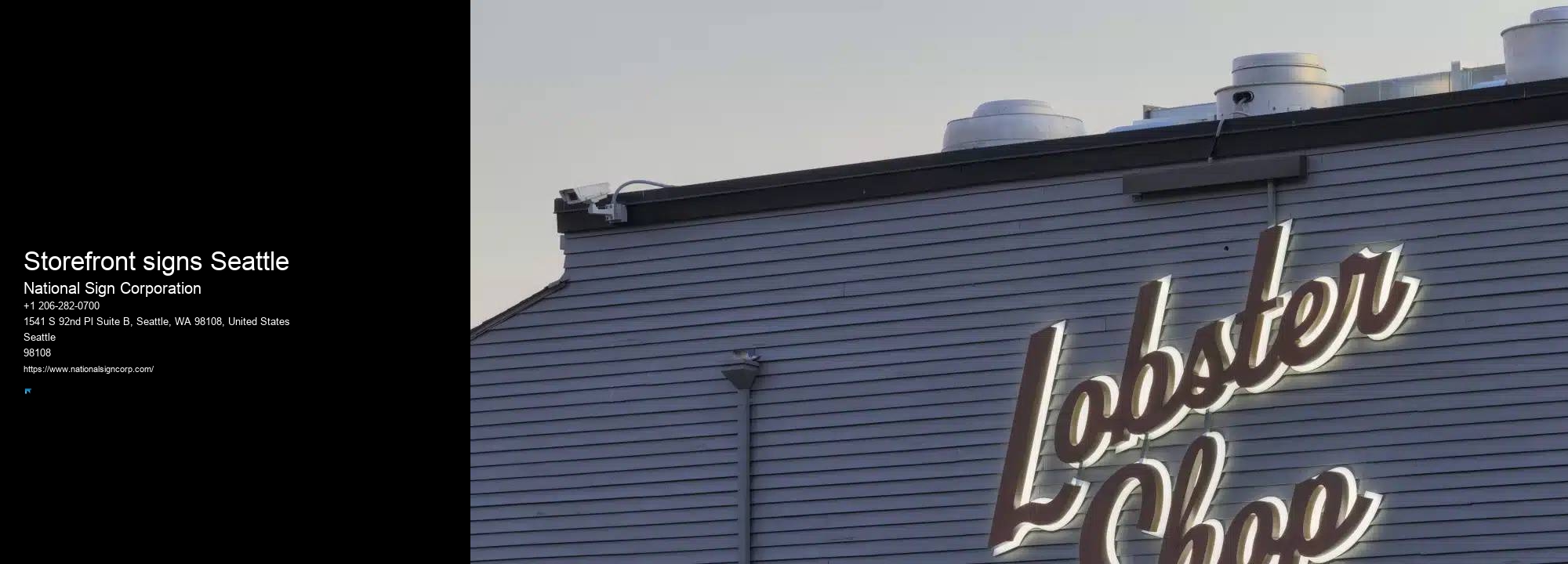

Moreover, they're adopting materials and processes that are more sustainable. This approach shows you can still grab attention with vibrant, dynamic signs without compromising on environmental values.
This adaptability is perfect for promotions, special events, or simply keeping your signage fresh and engaging. Instead, you invest once in quality craftsmanship that stands the test of time, making it a more cost-effective solution in the long run. LED Signs These concepts aren't just drafts; they're a visual conversation, meant to refine and adjust until they perfectly align with your vision. Investing in this technology not only sets you apart from competitors but also demonstrates your commitment to modernity and innovation. By making the switch, you're not just investing in a sign; you're investing in your business's future.
This commitment means you're not only getting a sign that looks great but one that aligns with modern environmental values. Take, for instance, a local café that struggled to attract evening customers. Hearing from those who've experienced National Sign Corporation's impact firsthand, numerous clients share their success stories, highlighting the transformative power of expertly crafted signage on their business. We're reducing emissions by optimizing our production processes and choosing suppliers who share our commitment to sustainability.
With LED technology, you're equipping your business with a tool that attracts, engages, and retains customers more effectively. Their approach goes beyond mere aesthetics. Sign Design You're investing not just in a sign but in a brand enhancement tool that draws attention and drives customer engagement. That's why we're committed to using only the highest quality materials and cutting-edge technology.
What sets them apart? That's why you see such creativity and innovation in the signs around you. As you consider the path to enhance your business visibility, National Sign Corporation's LED and RGB lighting signs offer a beacon of opportunity. Sign Shop In short, by choosing National Sign Corporation, you're not just getting a sign.
Beginning in the 1980s, the Seattle area developed into a technology center; Microsoft established its headquarters in the region. In 1994, Internet retailer Amazon was founded in Seattle, and Alaska Airlines is based in SeaTac, Washington, serving Seattle–Tacoma International Airport, Seattle's international airport. The stream of new software, biotechnology, and Internet companies led to an economic revival, which increased the city's population by almost 50,000 in the decade between 1990 and 2000.
But how exactly are they achieving this? As the city's premier sign shop, they're not just crafting signs; they're creating landmarks that embody the essence of local businesses. You're involved in every step, from initial design concepts to the final installation, making sure the end product truly represents your business. Lastly, personalization is making waves.
Their user-friendly software allows for quick changes, so your messages can stay as up-to-date as your business. Crafting signs that capture attention and deliver your message effectively requires a keen eye for design and an understanding of visual impact. Exploring the world beyond traditional signage, you'll discover an array of innovative options that elevate your message and captivate your audience.
You're not just getting a sign; you're getting a tailor-made solution that understands and amplifies your unique brand voice. That's the power of visibility at work. Tailoring signage to reflect the local culture or community can foster a stronger connection with your audience.
Whether it's regular cleaning, electrical checks, or updates, we're on it.
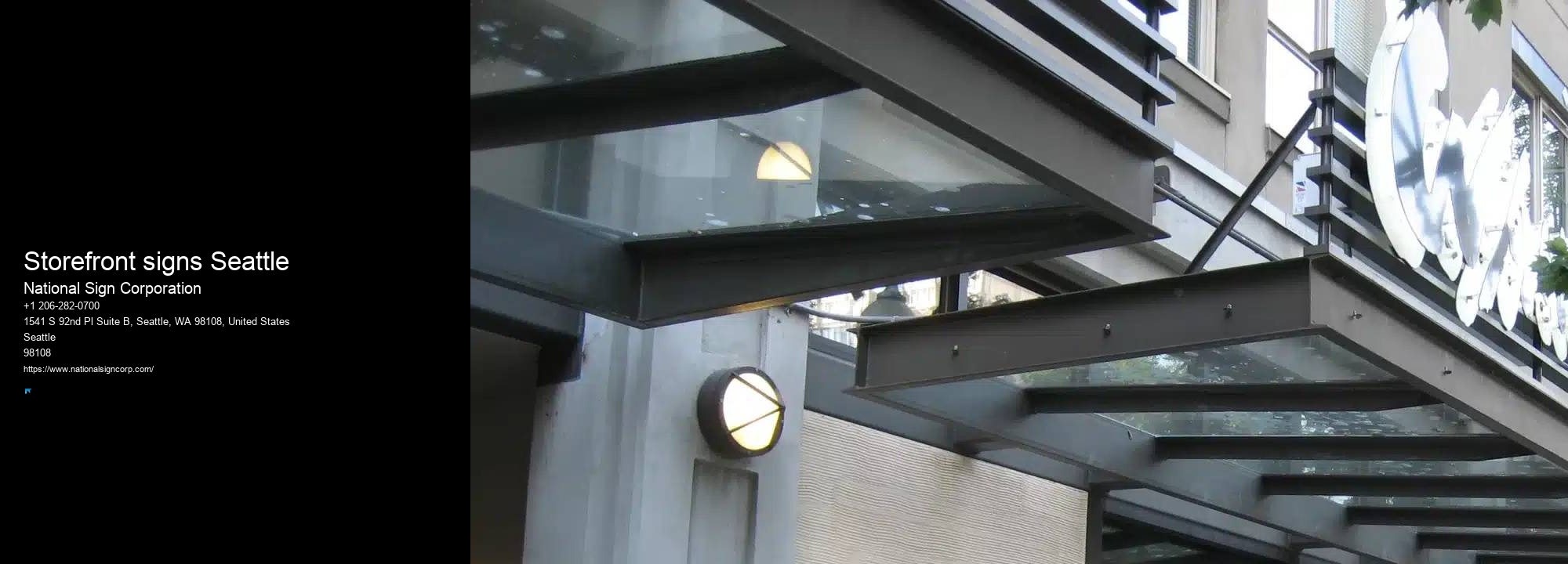
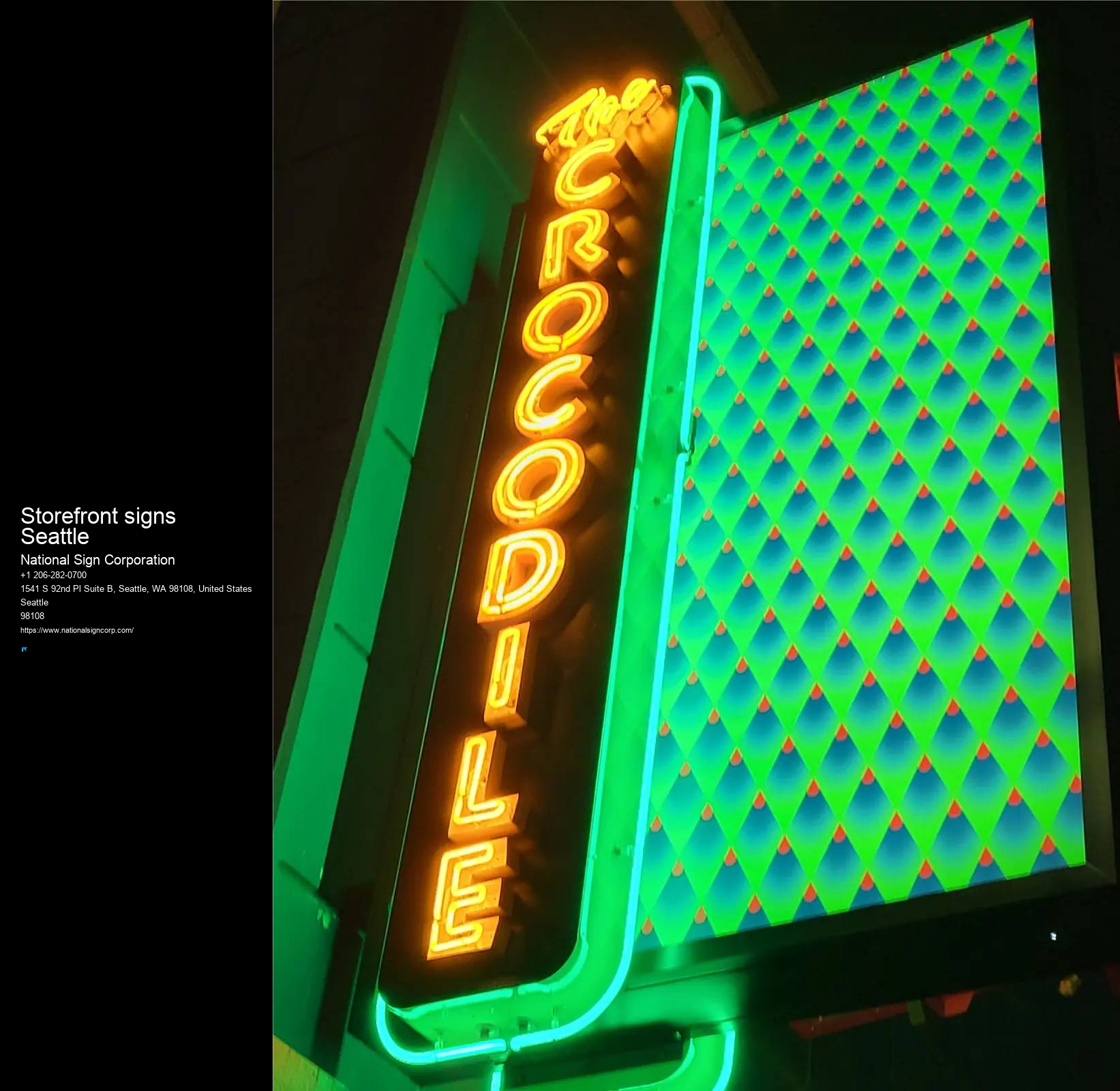
We'll also navigate any zoning or permitting requirements, ensuring your sign meets all local regulations.
Don't worry if you're not sure what you need; they're there to guide you through every step. They're equipped to handle projects of any size, whether you need a simple storefront sign or a comprehensive signage strategy for multiple locations. One restaurant owner shares how a custom, illuminated sign not only caught the eye of passersby but actually became a local landmark, driving foot traffic dramatically. They're crafting not just a sign but a story that resonates with your audience. In the bustling streets of Storefront signs Seattle, your business facade might just be blending a bit too well into the urban tapestry, making it a challenge to stand out.
Moreover, in a world where first impressions are everything, neon signs ensure your business grabs attention from the get-go. Interactive and digital elements are taking center stage, too. With National Sign Corporation, you're not just getting a sign; you're getting a smart, technologically crafted beacon for your brand. Moreover, they make a statement of permanence and stability, key qualities customers look for in a business.
You've likely seen their dynamic blade signs, innovative wall displays, and under-canopy lighting that brighten up Storefront signs Seattle's streetscapes. Together, you'll sift through concepts, colors, and materials that reflect your brand's identity and values. Read more about Storefront signs Seattle here Whether it's a minimalist design that speaks volumes about your brand's elegance or an eclectic mix that mirrors the vibrant spirit of Storefront signs Seattle, you've got the creative freedom to explore. Once you've settled on a design, our team takes care of the rest.
Customers weren't only drawn to the store by the attractive signage but also remembered the brand better, leading to repeat visits. With our expertise, your brand's potential is limitless. Custom Metal Signs Installing your electronic messaging sign begins with a thorough site evaluation to ensure optimal visibility and compliance with local regulations. They don't just make signs; they create visual landmarks that embody a brand's identity and message.
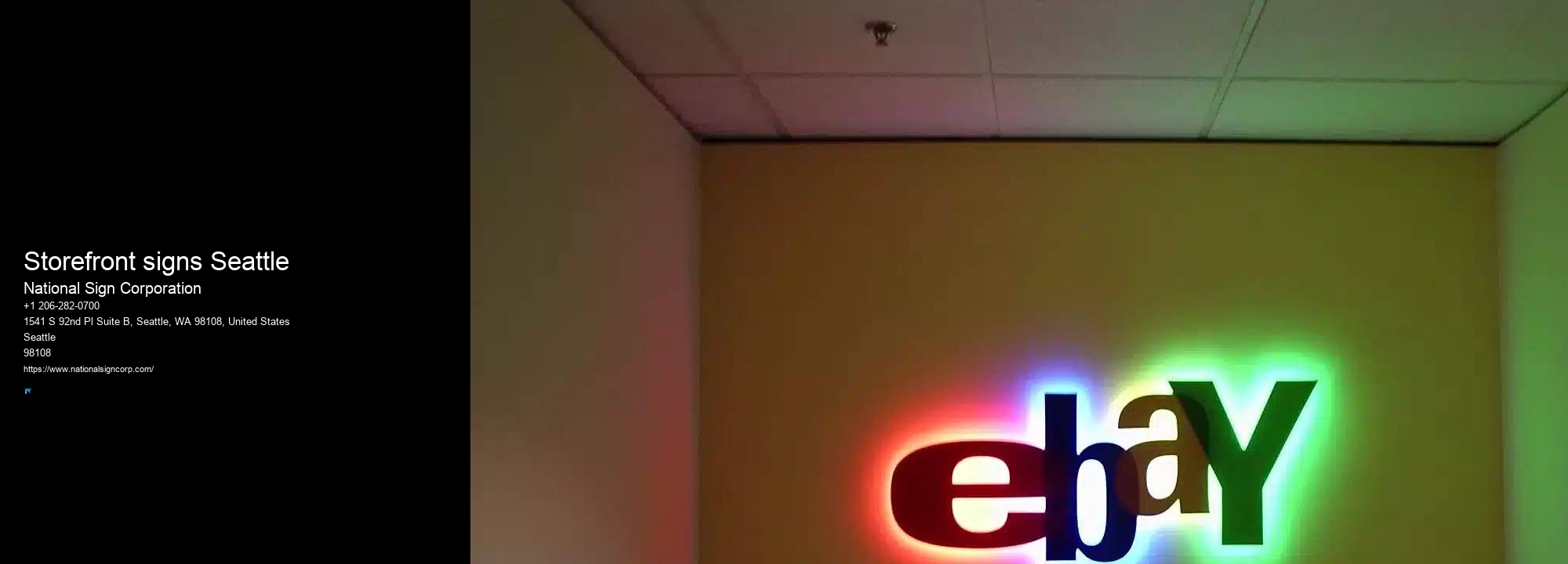
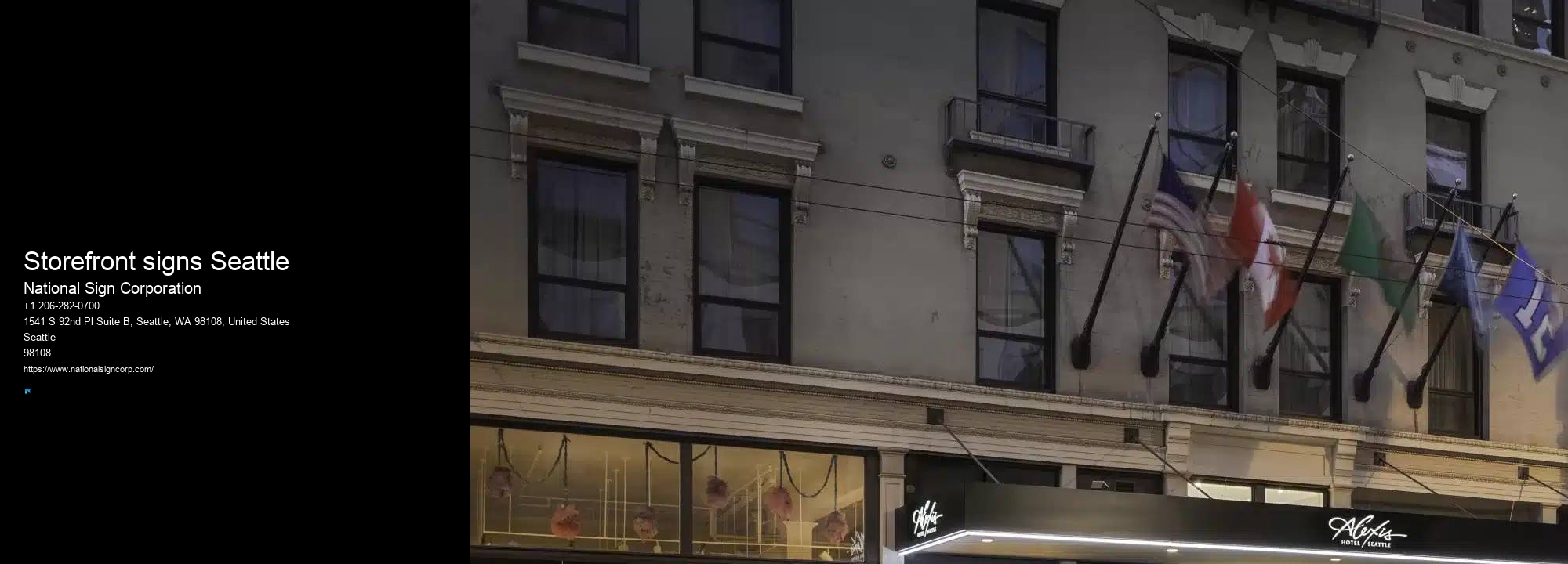
You'll find their approach is as personalized as your business. With years of experience, they've mastered the art of crafting signs that make businesses pop. You'll find that materials play a significant role in reducing a sign's environmental footprint. But we don't stop at quality. You'll find that their approach is meticulous, taking into account not just the physical placement of your sign, but also how it integrates with its surroundings to catch the maximum amount of attention.
We promise to get back to you swiftly, with the same professionalism and enthusiasm we apply to all our work. Stick around to explore the stories of success and the future of signage in an era where visibility is paramount. Sustainability is another trend you can't ignore. What's clear from these testimonials is that our commitment to understanding your needs, combined with our expertise and creativity, makes a significant difference.
We don't just stop at making your brand's vision a reality; we ensure it's seen in the best light and from the best angles.
It's the essence of your business, distilled into visual and verbal elements that speak directly to the hearts and minds of those you're meant to serve. Moreover, their portfolio is a testament to their commitment to quality and creativity. They're not just keeping pace; they're setting the standard in the industry. All it takes is a call or email to set up your consultation. Stick around as we unravel the secrets behind their success, from their custom design process to the cost-effectiveness of their projects, and why Storefront signs Seattle businesses can't seem to get enough.
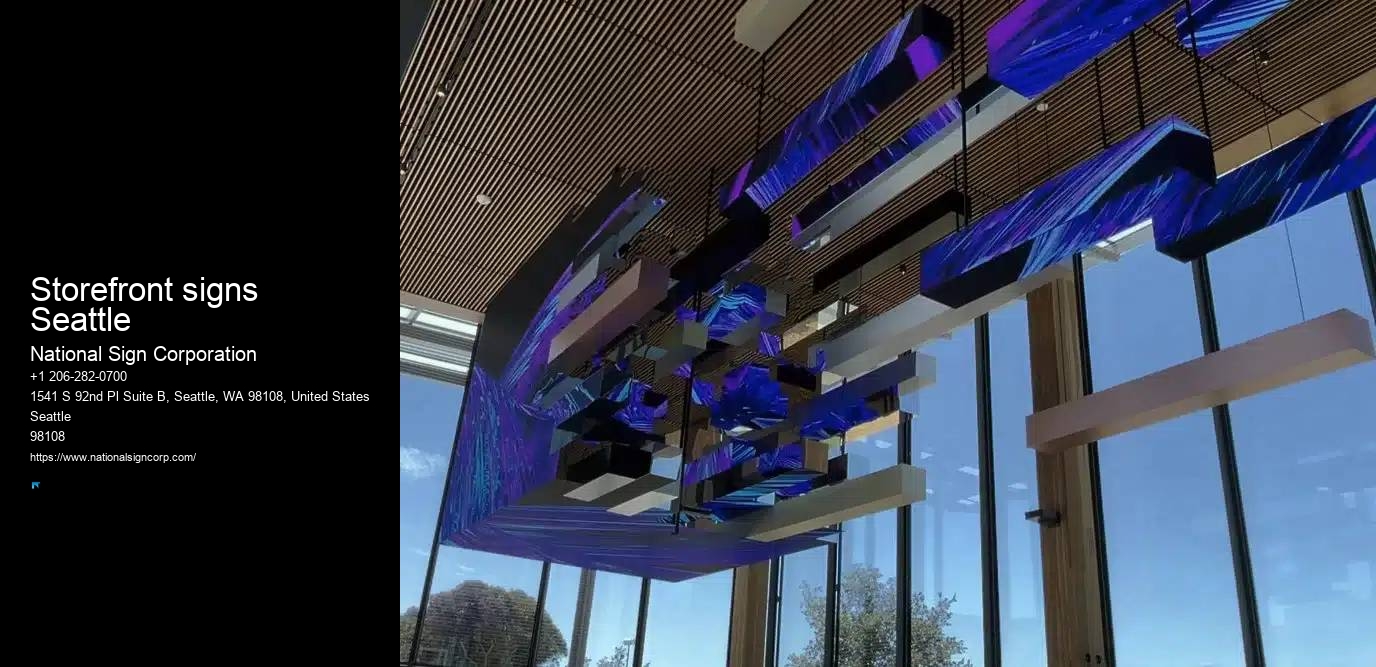



A sign is an object, quality, event, or entity whose presence or occurrence indicates the probable presence or occurrence of something else.[1] A natural sign bears a causal relation to its object—for instance, thunder is a sign of storm, or medical symptoms a sign of disease. A conventional sign signifies by agreement, as a full stop signifies the end of a sentence; similarly the words and expressions of a language, as well as bodily gestures, can be regarded as signs, expressing particular meanings. The physical objects most commonly referred to as signs (notices, road signs, etc., collectively known as signage) generally inform or instruct using written text, symbols, pictures or a combination of these.
The philosophical study of signs and symbols is called semiotics; this includes the study of semiosis, which is the way in which signs (in the semiotic sense) operate.
Semiotics, epistemology, logic, and philosophy of language are concerned about the nature of signs, what they are and how they signify.[2] The nature of signs and symbols and significations, their definition, elements, and types, is mainly established by Aristotle, Augustine, and Aquinas. According to these classic sources, significance is a relationship between two sorts of things: signs and the kinds of things they signify (intend, express or mean), where one term necessarily causes something else to come to the mind. Distinguishing natural signs and conventional signs, the traditional theory of signs (Augustine) sets the following threefold partition of things: all sorts of indications, evidences, symptoms, and physical signals, there are signs which are always signs (the entities of the mind as ideas and images, thoughts and feelings, constructs and intentions); and there are signs that have to get their signification (as linguistic entities and cultural symbols). So, while natural signs serve as the source of signification, the human mind is the agency through which signs signify naturally occurring things, such as objects, states, qualities, quantities, events, processes, or relationships. Human language and discourse, communication, philosophy, science, logic, mathematics, poetry, theology, and religion are only some of fields of human study and activity where grasping the nature of signs and symbols and patterns of signification may have a decisive value. Communication takes place without words but via the mind as a result of signs and symbols; They communicate/pass across/ messages to the human mind through their pictorial representation.


The word sign has a variety of meanings in English, including:
St. Augustine was the first man who synthesized the classical and Hellenistic theories of signs. For him a sign is a thing which is used to signify other things and to make them come to mind (De Doctrina Christiana (hereafter DDC) 1.2.2; 2.1.1). The most common signs are spoken and written words (DDC 1.2.2; 2.3.4-2.4.5). Although God cannot be fully expressible, Augustine gave emphasis to the possibility of God's communication with humans by signs in Scripture (DDC 1.6.6). Augustine endorsed and developed the classical and Hellenistic theories of signs. Among the mainstream in the theories of signs, i.e., that of Aristotle and that of Stoics, the former theory filtered into the works of Cicero (106-43 BC, De inventione rhetorica 1.30.47-48) and Quintilian (circa 35–100, Institutio Oratoria 5.9.9-10), which regarded the sign as an instrument of inference. In his commentary on Aristotle's De Interpretatione, Ammonius said, "according to the division of the philosopher Theophrastus, the relation of speech is twofold, first in regard to the audience, to which speech signifies something, and secondly in regard to the things about which the speaker intends to persuade the audience." If we match DDC with this division, the first part belongs to DDC Book IV and the second part to DDC Books I-III. Augustine, although influenced by these theories, advanced his own theological theory of signs, with whose help one can infer the mind of God from the events and words of Scripture.

Books II and III of DDC enumerate all kinds of signs and explain how to interpret them. Signs are divided into natural (naturalia) and conventional (data); the latter is divided into animal (bestiae) and human (homines); the latter is divided into non-words (cetera) and words (verba); the latter is divided into spoken words (voces) and written words (litterae); the latter is divided into unknown signs (signa ignota) and ambiguous signs (signa ambigua); both the former and the latter are divided respectively into particular signs (signa propria) and figurative signs (signa translata), among which the unknown figurative signs belong to the pagans. In addition to exegetical knowledge (Quintilian, Institutio Oratoria 1.4.1-3 and 1.8.1-21) which follows the order of reading (lectio), textual criticism (emendatio), explanation (enarratio), and judgment (iudicium), one needs to know the original language (Hebrew and Greek) and broad background information on Scripture (DDC 2.9.14-2.40.60).
Augustine's understanding of signs includes several hermeneutical presuppositions as important factors. First, the interpreter should proceed with humility, because only a humble person can grasp the truth of Scripture (DDC 2.41.62). Second, the interpreter must have a spirit of active inquiry and should not hesitate to learn and use pagan education for the purpose of leading to Christian learning, because all truth is God's truth (DDC 2.40.60-2.42.63). Third, the heart of interpreter should be founded, rooted, and built up in love which is the final goal of the entire Scriptures (DDC 2.42.63).
The sign does not function as its own goal, but its purpose lies in its role as a signification (res significans, DDC 3.9.13). God gave signs as a means to reveal himself; Christians need to exercise hermeneutical principles in order to understand that divine revelation. Even if the Scriptural text is obscure, it has meaningful benefits. For the obscure text prevents us from falling into pride, triggers our intelligence (DDC 2.6.7), tempers our faith in the history of revelation (DDC 3.8.12), and refines our mind to be suitable to the holy mysteries (DDC 4.8.22). When interpreting signs, the literal meaning should first be sought, and then the figurative meaning (DDC 3.10.14-3.23.33). Augustine suggests the hermeneutical principle that the obscure Scriptural verse is interpreted with the help of plain and simple verses, which formed the doctrine of "scriptura scripturae interpres" (Scripture is the Interpreter of Scripture) in the Reformation Era. Moreover, he introduces the seven rules of Tyconius the Donatist to interpret the obscure meaning of the Bible, which demonstrates his understanding that all truth belongs to God (DDC 3.3.42-3.37.56). In order to apply Augustine's hermeneutics of the sign appropriately in modern times, every division of theology must be involved and interdisciplinary approaches must be taken.[3]
We've worked with National on several large-scale signage projects and they're excellent. The team is creative, responsive, and the final product is beautiful. I highly recommend them.
As an architect, I rely on professionals like National Sign for my projects. They are very knowledgeable, they help advise me on the very complicated codes for signage, and they are capable of integrating so many different materials: wood, metal, glass, etc... Their shop is like a workman's fantasy camp!
I began doing business with National Sign back in 1989 with a relatively minor project. Their diligence and attention to detail ensured the project's success. 29 years later the two signs are still looking great and seeing them reminds me why I have chosen National to be my sole branding partner.
I have done business with National Sign for over 30 years as a Safeway store manager in Seattle, a store manager for a grocery independent in Spokane and now in Oregon. NSC does what they say they will do. They are on time, professional, and thorough. NSC communicated with me throughout the project. All their signs have looked great. I highly recommend.
They use durable materials and secure installation methods to protect signs from vandalism and weather. Additionally, they might offer maintenance services to keep your sign in top shape despite any harsh conditions it faces.
When you're getting a new sign, they take care of the old one responsibly. They'll recycle or properly dispose of your outdated signage, ensuring it's done eco-friendly and in compliance with local regulations.
They ensure environmental sustainability by using eco-friendly materials and energy-efficient production methods. You'll find they recycle waste and minimize energy consumption, making their custom signs not just visually appealing but also kind to the planet.